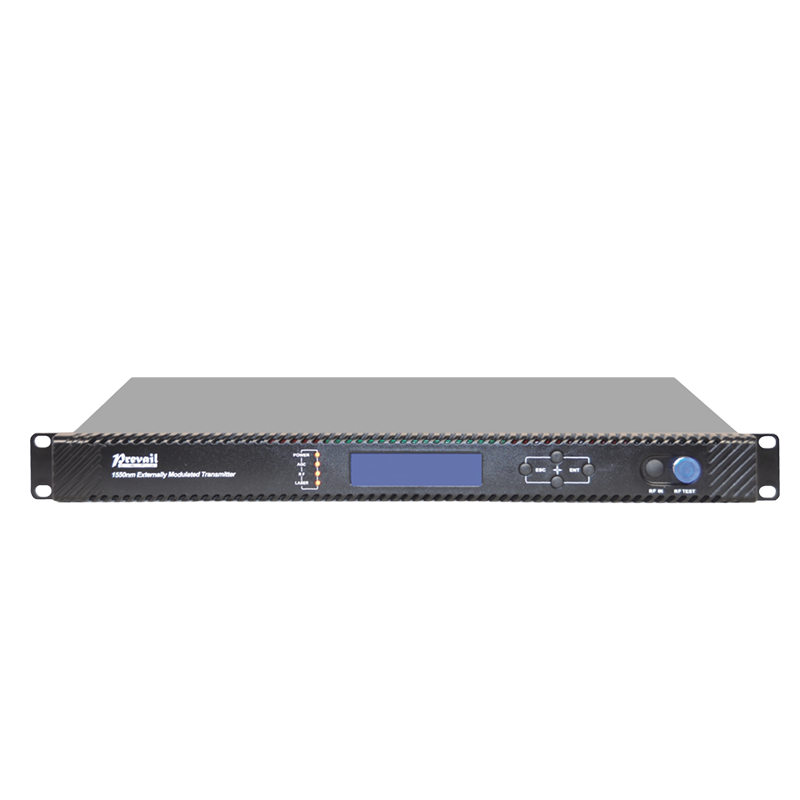What are the advantages and application scenarios of 1550nm optical transmitters?
In the field of modern high-speed communications, 1550nm optical transmitters (1550nm Optical Transmitter), as key equipment in optical fiber communication systems, have become one of the core technologies for long-distance, high-capacity data transmission with their excellent performance and wide application scenarios. Whether it is telecommunications networks, data center interconnection, or broadcast and television transmission, 1550nm optical transmitters are driving the rapid development of the information age.
Optical transmitters are usually composed of lasers (such as distributed feedback lasers DFB or external modulation lasers EML), drive circuits, modulators, and optical devices. Through the collaborative work of these components, 1550nm optical transmitters can achieve efficient and stable optical signal output.
Advantages of 1550nm optical transmitters
Low-loss transmission
In optical fibers, the optical signal attenuation of 1550nm wavelength is the lowest (about 0.2dB/km), which enables it to maintain high signal quality in long-distance transmission and reduce the need for repeaters.
High bandwidth support
The 1550nm wavelength has good compatibility with the nonlinear effects of optical fibers, and can support higher modulation rates and larger data capacities, meeting high-bandwidth applications such as 4K/8K video and cloud computing.

Excellent dispersion characteristics
Compared with other wavelengths (such as 1310nm), the 1550nm wavelength has lower dispersion and less signal distortion, making it particularly suitable for high-speed, long-distance communication systems.
Amplifier compatibility
The 1550nm wavelength is highly compatible with erbium-doped fiber amplifiers (EDFAs), which can further extend the transmission distance through amplifiers while improving the stability and reliability of the system.
Versatile applications
The 1550nm optical transmitter is not only suitable for traditional telecommunications networks, but can also be used in a variety of scenarios such as cable television (CATV) broadcasting, data center interconnection (DCI), and submarine optical cable communications.
Modular design
Modern 1550nm optical transmitters usually adopt a modular design, which is easy to integrate into various communication systems and supports flexible expansion and upgrades.
Application scenarios of 1550nm optical transmitters
Telecommunication network
Long-distance trunk communication: 1550nm optical transmitters are widely used in national backbone networks and international communication lines, supporting ultra-long-distance data transmission across cities and countries.
Fiber-to-the-home (FTTH): In fiber-optic broadband access, 1550nm optical transmitters can meet users' needs for high-bandwidth services such as high-definition video and online games.
Cable TV (CATV) broadcasting
1550nm optical transmitters are widely used in optical fiber transmission of cable TV signals, supporting simultaneous transmission of multi-channel high-definition programs to ensure that users have a high-quality audio-visual experience.
Data Center Interconnection (DCI)
With the development of cloud computing and big data, the demand for high-speed interconnection between data centers continues to grow. 1550nm optical transmitters, with their high bandwidth and low loss characteristics, have become an ideal choice for data center interconnection.
Submarine optical cable communication
Submarine optical cable systems require ultra-long-distance signal transmission capabilities. 1550nm optical transmitters combined with EDFA technology can achieve thousands of kilometers of relay-free transmission and ensure the stability of global communications.
Scientific research and industrial applications
In the fields of LiDAR, fiber optic sensing and precision measurement, 1550nm optical transmitters are highly favored for their high stability and low noise characteristics.
How to choose a suitable 1550nm optical transmitter?
When purchasing a 1550nm optical transmitter, it is necessary to make comprehensive considerations based on actual needs and application scenarios:
Transmission distance
Choose the appropriate optical transmitter power and whether it needs to be used with EDFA according to the transmission distance of the system.
Modulation method
Different modulation methods (such as direct modulation or external modulation) will affect the performance of the system. For high-speed and long-distance transmission, it is recommended to choose an external modulation optical transmitter.
Output power
Choose an appropriate output power range according to the link budget and receiving sensitivity requirements to ensure signal quality.
Signal-to-noise ratio (SNR)
Optical transmitters with high signal-to-noise ratio can provide clearer signal transmission, especially in broadcasting and data center interconnection.
Brand and technical support
Choose products from well-known brands and understand their after-sales service and technical support capabilities for subsequent maintenance and upgrades.
Cost and cost performance
Weigh the performance and price of the equipment according to the budget and choose the solution that best suits the project needs.
As the core technology in the field of optical fiber communication, the 1550nm optical transmitter is providing strong technical support for the information construction of modern society. Its low loss, high bandwidth and long-distance transmission capabilities make it the preferred equipment in a variety of communication scenarios. With the rapid development of emerging technologies such as 5G, Internet of Things and artificial intelligence, the application scope of 1550nm optical transmitters will be further expanded, injecting more vitality into the global communication network.

















